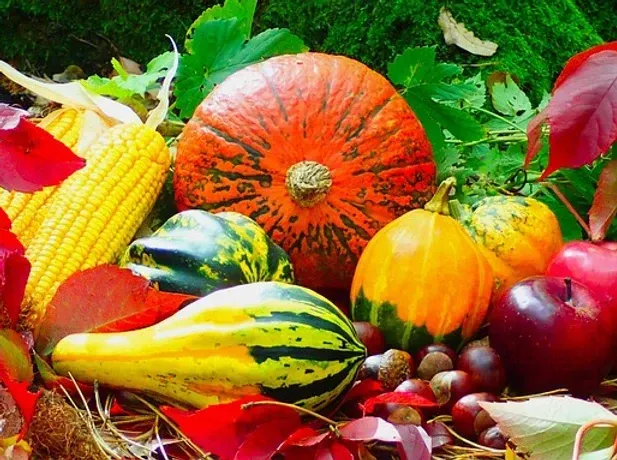
Lifestyle Blogs

How To Make The Right Food Choices For Weight Loss
Wouldn’t it be great if we all loved to eat healthy and make the best diet for weight loss all the time? But lets be realistic, not only is that unreal and impossible but also extremely boring. That is why the process of eating healthy and making best diet for weight loss is a habit that we acquire over time which needs practice. The aim should always be to make best diet for weight loss as often as we can without suffering from guilt when we can’t. To reach a good balance we can keep a few factors in mind that can help speed up the process. Every small step matters and adds up to big change. Try to incorporate as many changes as you can, one at a time. You will start noticing the difference in your waistline, energy levels, mood and frequency of falling sick within a few months.
The undermentioned factors are an effort to improve best diet for weight loss choices at the grass root level for best results for your health.
1. Is it fresh, locally grown and in-season?
Buying fruits and vegetables weight-loss-friendly that come from far way, not of that season will not only be expensive but will also lose their nutritious value once they travel long distances. You also boost the local economy by buying in season and fresh produce.

2. Is it home-cooked or from outside?
You have no or minimal control over things cooked outside the house, from the oil used to the ingredients put etc. The freshness of ingredients can also not be a surety.
3. Cooking method
You should try to cook in a way that you retain most nutrients after cooking and therefore use methods like
sautéing veggies on high heat and eating them crunchy or cooking it a bit longer in their own juices if you don’t lie your vegetables crunchy,
boiling the veggies and then seasoning with spices,
marinating the veggies followed by grilling, baking, roasting etc.
Unless cooking curries, stews etc the time spent on cooking veggies should be minimal.
4. Cooking medium
Try and choose cold pressed oils whenever possible. Good choices are olive oil, mustard oil or coconut oil for cooking along with nut oils like avocado oil or almond oil. Be careful of the quantity used as these are energy dense foods and the calories will add up quickly. If you use vegetable oils try using it very sparingly. Another great cooking medium is ghee or clarified butter from grass fed cows.

5. A meal should include all food groups
A meal should contain grains, fats, protein, veggies/fruits, and water. Grains should be 1/3rd portion of one half of the meal, proteins around 2/3rd (of the half meal) and veggies and fruits should make up approximately ½ the meal with a small amount of healthy fats in form of oils, etc. along with water. If not all meals, at least 70-80% meals should be balanced.
6. Avoid ready to eat meals in a box
They are extremely high on preservatives, sugar and fats and therefore create havoc inside your system. It is better to eat a freshly cooked meal from outside rather than take a ready to eat meals from the supermarket shelves if you don’t have access to home-cooked food.
7. Choose whole foods over processed foods
For example, choose oats cooked in any milk rather than sugar-coated, processed breakfast cereals with milk. Other examples are brown rice, quinoa, whole wheat, millets etc.
8. Keep a watch on your snacks
More damage is done by snacking on wrong foods and at wrong times rather than the main meals. Be mindful of what you eat and what you store in your house to snack. If something unhealthy is around you will definitely eat it. Choose a fruit over a packet of chips. Choose baked over fried.
9. Control daily beverage consumption
Tea and coffee are an integral part of everyone’s daily routine. But this is an easy way to consume a lot of calories through excess sugar intake and of course a lot of caffeine and theophylline have their own side effects when taken in excess.

10. Foods with a short shelf life are better
In the supermarket, the foods that have a quick expiry are the freshest and don’t have stabilizing agents and preservatives which makes your food less laden with chemicals which is of course good for health and longevity.
11. Use as many herbs and spices as you like
Being an Indian there is no dirt of spices in my food but a balance of fiery spices should be made with some cooling foods in a meal like yogurt. Both herbs and spices are a rich source of micronutrients along with antibacterial and antioxidant properties.
12. Don’t fall for advertising gimmicks by companies about low fat and sugar free
Anything that is not in a box with a catchy advertisement on the front of the box is definitely healthier than the ones with it. Whether it is produce including fruits and veggies or simple whole grains which need to be cooked from scratch, they either don’t come in a box or if they do, the boxes would be plain and simple without attractive colors or one liners. Those are definitely the whole foods. Also learn to read food labels. You should try to be mindful of your right food choices at least 70- 80 % of the time.
If you have fallen of your path, there is nothing to worry about, just jump right back in the first opportunity you get and start making right food choices for weight loss again. If you can make these changes in your eating habits, it will benefit your whole family, not just you. Over time these will become a part of your life and it won’t seem like an effort after that.
So let’s make the best diet choices for good health and still enjoy great food with family and friends as we always did but this time without feeling guilty about eating or compromising our health and fitness.
© Neha Bhandari Rao | Privacy Policy | Terms